Your cart is currently empty!
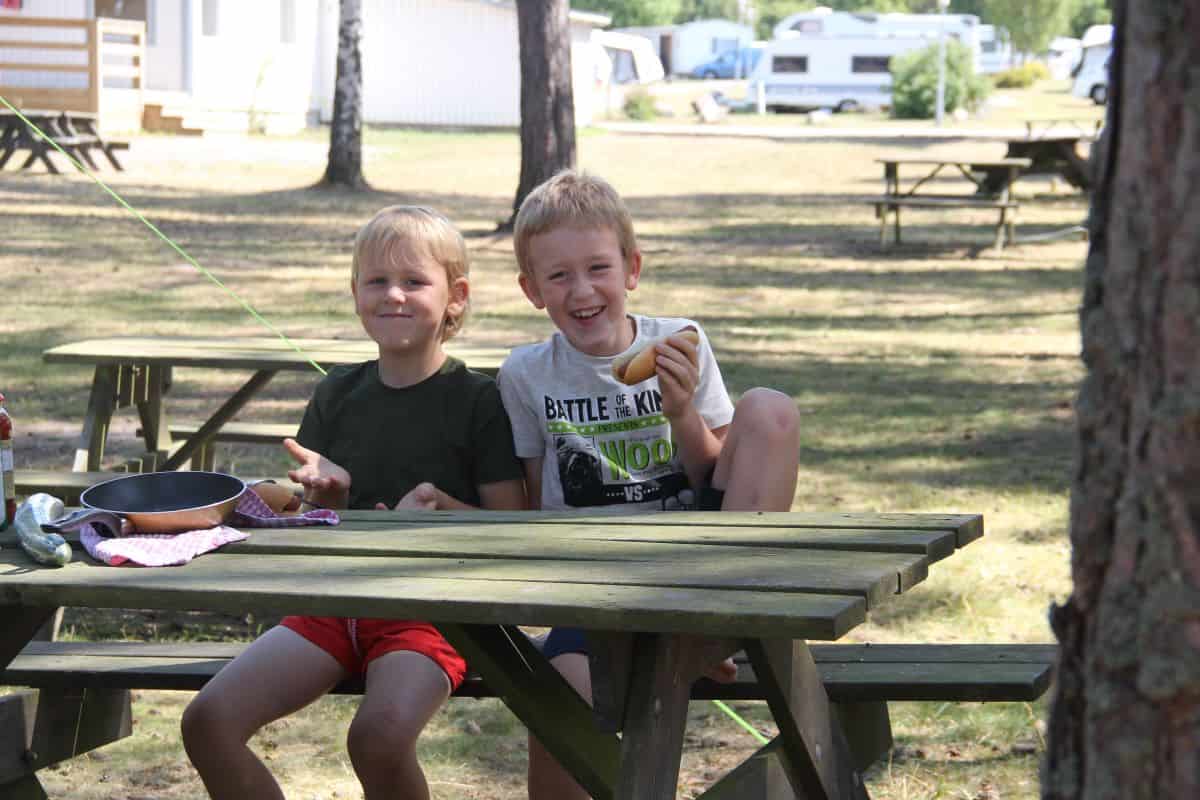
Autism, Finding Happiness in Nature
Autism is a developmental disorder that can affect communication, social interaction, and behavior in autistic individuals. Autistic children often struggle with sensory processing and can become overwhelmed in social situations or with disruptions in routines. However, spending time in nature and going on outdoor adventures can provide many benefits for autistic children. Today, Anna Stopinska-Lewucha, a UK mom of two, is sharing her family’s experience using nature and time outdoors to help her autistic son thrive.
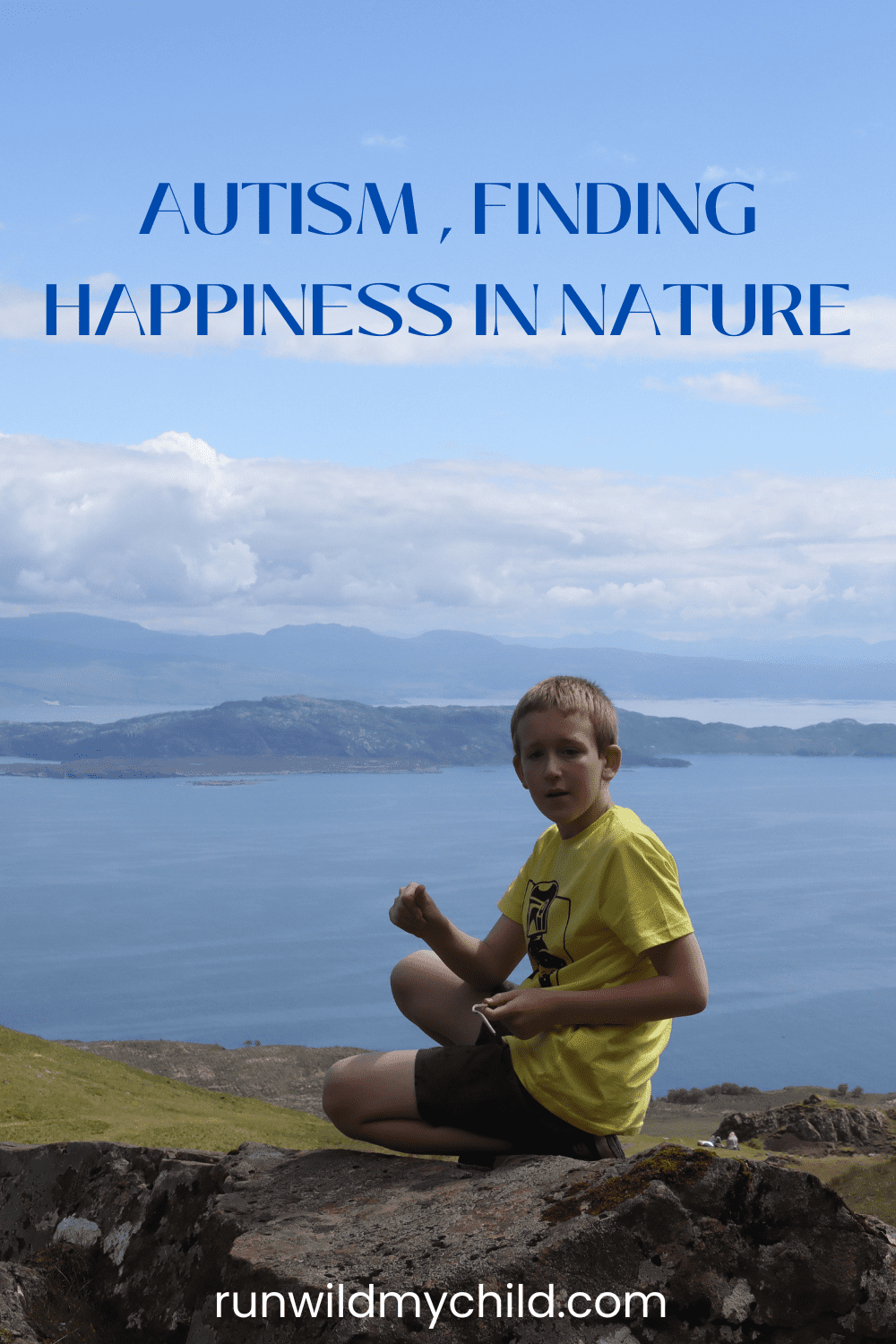
Autism and the outdoors
How often do you see children with developmental differences when you are outdoors? How many families with children with additional needs actively and purposefully make the most of their natural surroundings?
I’m the mum of an awesome, adventurous, and autistic boy. Today, I want to give you an overview of what autism is, how spending time outside and in nature can benefit autistic kids, and encourage you to take your unique family outside and discover what nature has to offer.
What is autism?
Autism is a life-long, neurodevelopmental condition. Every person diagnosed with autism experiences difficulties in communicating and interacting with the world and has repetitive patterns of behaviour and thought. Autistic people may also have different ways of learning, moving, or paying attention.
Core symptoms of autism, differences in sensory processing, and possible learning difficulties combine to create a plethora of difficulties in the everyday lives of autistic children and their families.
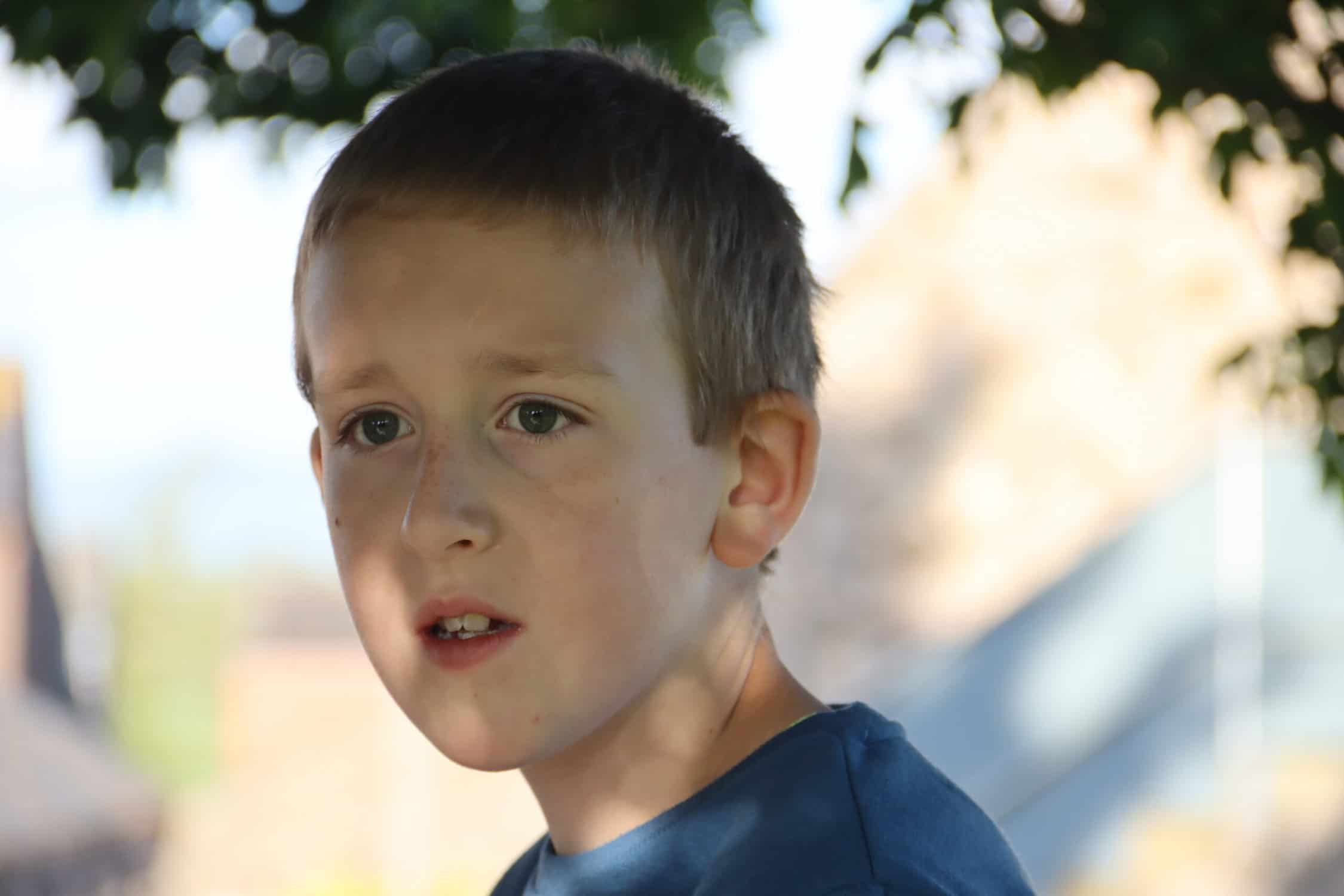
What autism means to our family
Dear readers, I hope this gloomy and serious introduction to autism did not put you off, and I’m glad you’re still here reading.
Let me take a minute for introductions. I’m Anna, and my older son, Stefan, is autistic.
This means that the above description relates to Stefan, and his autism diagnosis is one which we have to accept and embrace. However, I’m here to tell you that our lives aren’t doom and gloom at all. His diagnosis isn’t at either extreme – Stefan is not a boy locked in a glass dome, and neither is he an antisocial genius. He has severe learning difficulties, and his autistic presentations are complex. But he also is a little boy who loves trains, washing machines, and being outside.
This post is about how nature makes him happy.
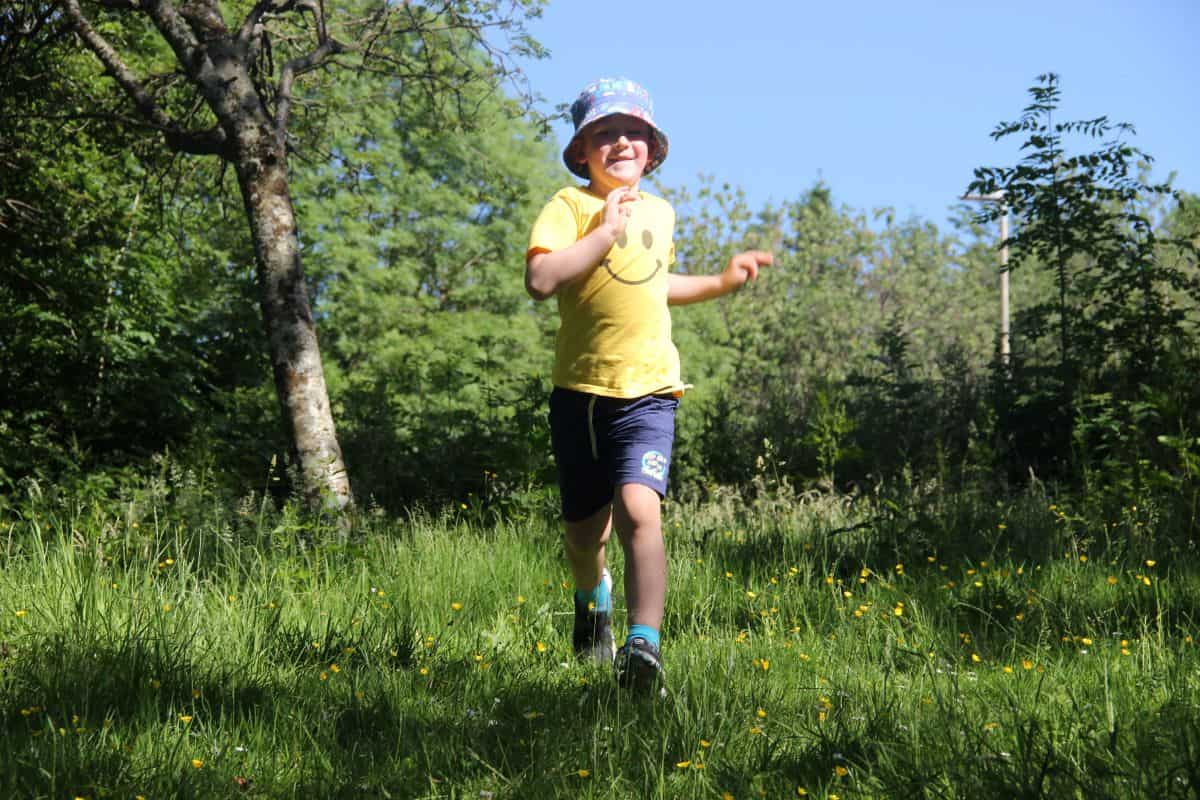
Our journey with autism
Stefan’s autism was mentioned for the first time when he was two and a half years old. Once the professionals suggested that Stefan might be autistic, I went online and read all I could about the condition. Most of what I found was written in a negative tone. Yet, I was determined that our story would not be a negative one.
I’ve experimented on Stefan more than I am comfortable admitting. Autism affects each person differently, meaning that autistic people have unique strengths and challenges and different treatment needs. I tried Applied Behavioural Analysis (ABA), the Son-Rise programme, and some other treatments and programs I found on the internet to see if anything would make a difference. Unfortunately, I didn’t feel like any of it was doing us any good.
So, I enrolled to do a degree in Autism at the University of Strathclyde to better understand what we were dealing with and how I could help my son. I struggled at the beginning of the course because it was all about impairments and deficits. But, eventually, we were given a bigger picture. We were told to consider what would be really important for an autistic person and what practical things we could do to improve their quality of life.
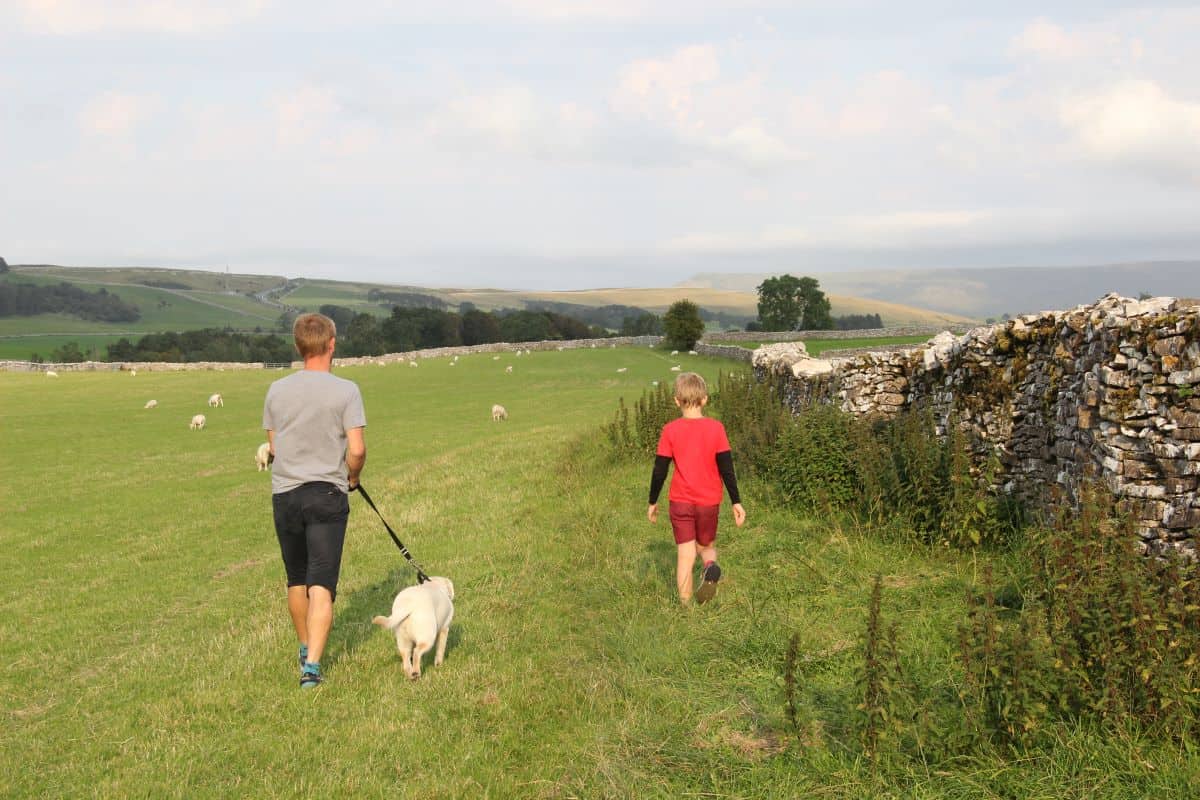
Ditching therapies for outdoor play
The course leader at the time, Dr. Anna Robinson, specialises in autistic welfare. While studying the well-being module, I found my path. I stopped searching for therapies and started looking at what makes my child happy.
Outdoors was always a place where he could be himself. So, we started paying bigger attention to free play, muddy fun, and child-led exploration. And this is where our positive story began and our son began to thrive.
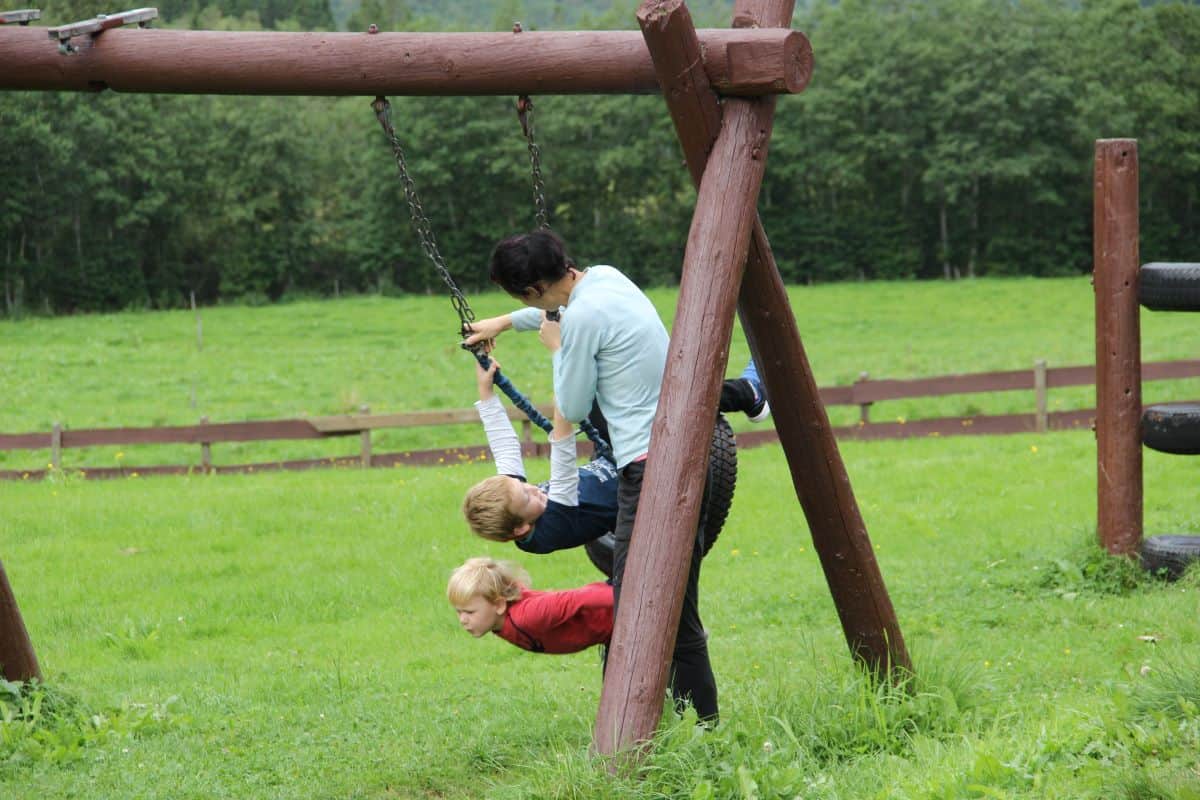
Accepting changes through outdoor activities
I remember our walks to and from Stefan’s preschool when he was little. They had to be exactly the same. He would insist on sameness and rebel if I wanted to change our route or anything about our walk.
But, these walks had alterations as seasons changed and some degree of unpredictability (as happens in nature). Looking back, making a daily walk outdoors a part of our routine allowed some openness to changes because of the weather, time of the year, temperatures, and situations we encountered on our way home. Just experiencing nature as it changes, allowed Stefan to experience change on a level he could accept and handle.
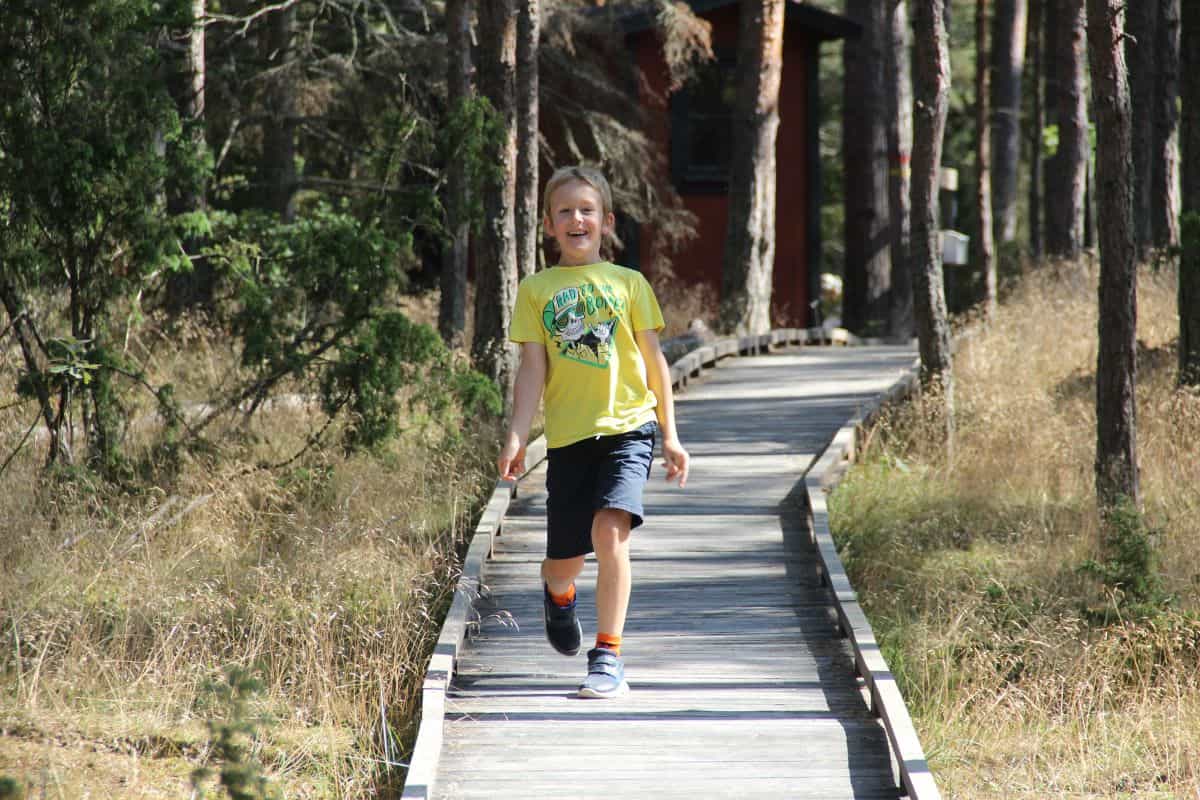
“Early years” day trips
Stefan’s diagnostic path started when we moved home. We left a big city behind and moved to a tiny town in Cumbria, UK. Despite having a toddler and a baby, we wanted to discover new places and enjoy the vicinity of the sea and mountains.
Our trips out were often short, but they brought us joy and gave us a good variety of experiences with Stefan. He loved running around and not being restricted in how he behaved and what he could do. Being outside gave him a newfound sense of freedom to explore his body and his surroundings. We found that choosing outdoors over indoors was more beneficial and brought more contentment for all of us.
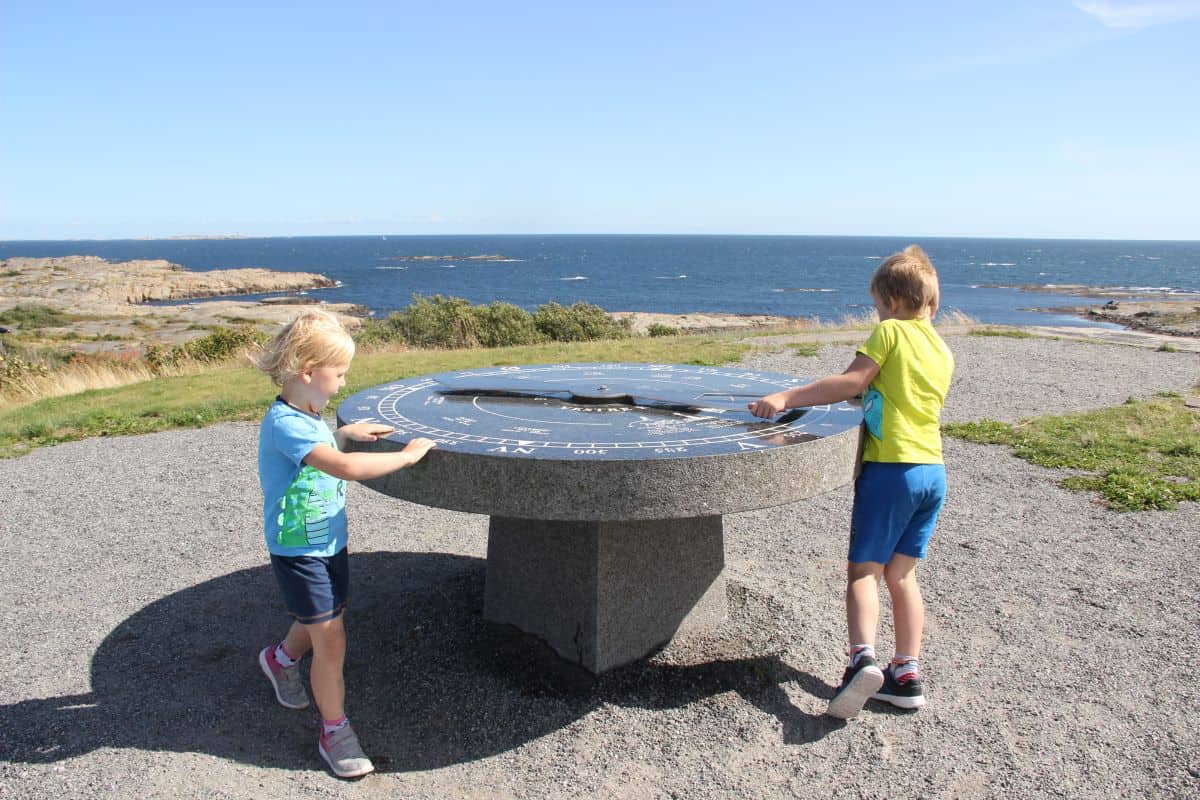
Getting outside the comfort zone
Every day trip, our little out-of-the-town adventures, were taking Stefan away from places he was familiar with. I don’t think we realised back then how important this was for his development. Desensitising him to changes, obstacles, and different environments was challenging. However, putting him in new situations also evokes curiosity, which neurotypical children are naturally equipped with.
Stefan, possibly, was curious about the world around him too, but he was very cautious. I don’t think his curiosity would come naturally to him had we not helped him overcome obstacles related to exploring new places and getting out of his routine. I believe he learned to enjoy exploring through these outings, rather than being born curious or with a desire to explore. Or maybe he was born to explore but had to be given tools to overcome his fears? Either way, we are proud that he found his way to be openly and happily curious.
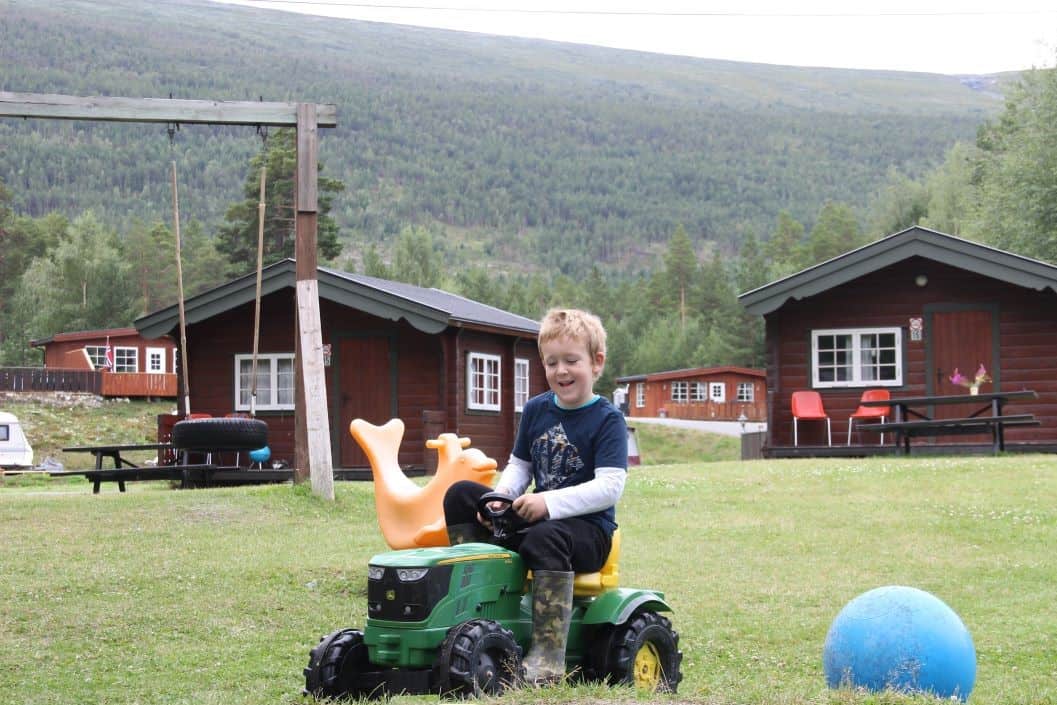
Spontaneity for outdoor adventures
Getting outside and going on adventures allowed us more spontaneity. Usually, day trips and local walks were planned, and we always gave Stefan enough time to accept the fact that we were taking him somewhere.
However, we also had moments when we would, for instance, arrange a quick trip to the seaside because the weather was lovely. A change of routine like this could be very difficult for some autistic children. But with time, he accepted non-planned outings and could be happy with the last-minute changes in plans. His love for the outdoors is bigger than his love for a set routine.
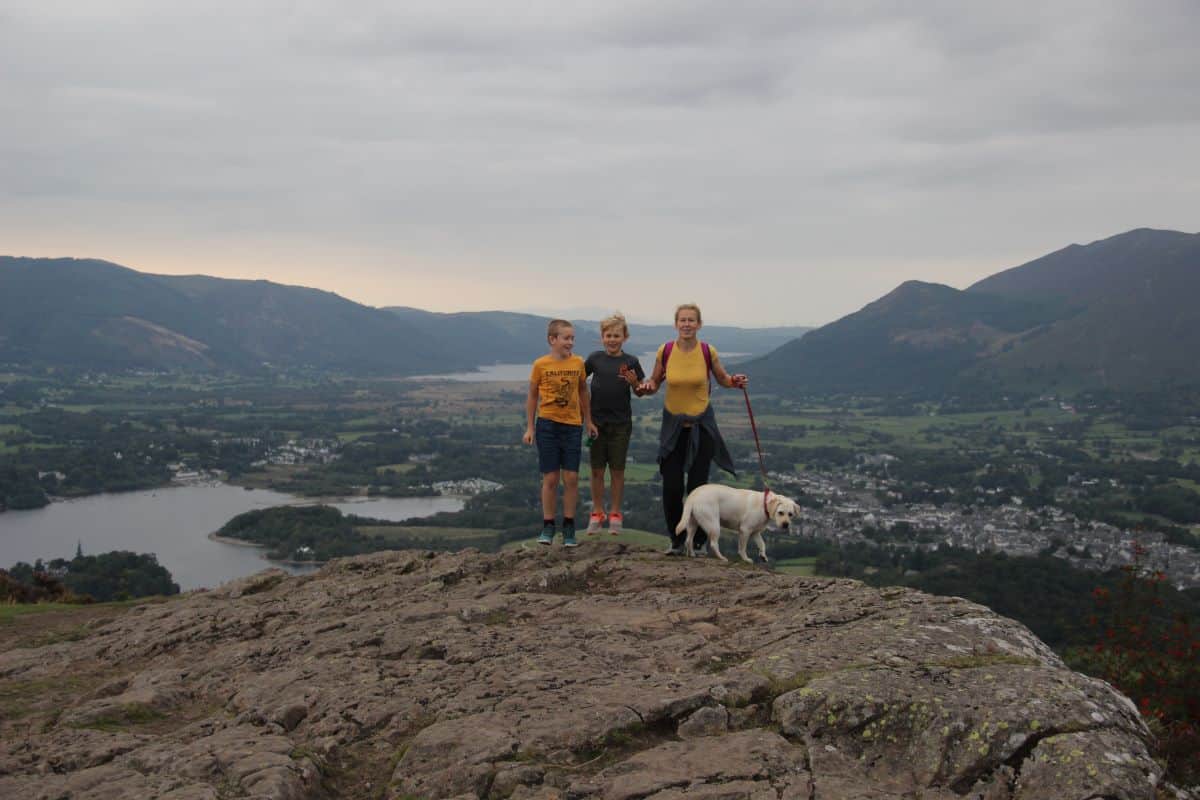
Mistakes and discomforts
I don’t want to give you the wrong impression…we aren’t perfect parents. We make mistakes like everyone else. For example, last Easter, we went hiking and forgot water. We had a choice of turning round and going home, going to the nearest town and buying water, or going for a hike and drinking stream water (don’t try it yourselves – the water where you live might upset your stomach). The weather was glorious for the first time in ages, so, we went on! We drank stream water, hiked for four hours, and bagged three new peaks. It was worth it!
As parents, we are often scared of making mistakes and experiencing discomfort. But, making mistakes show our children that life isn’t always perfect and teach them to look for solutions. Mistakes happen, but when we approach them as learning opportunities, not as failures or something we should escape from, we all benefit.
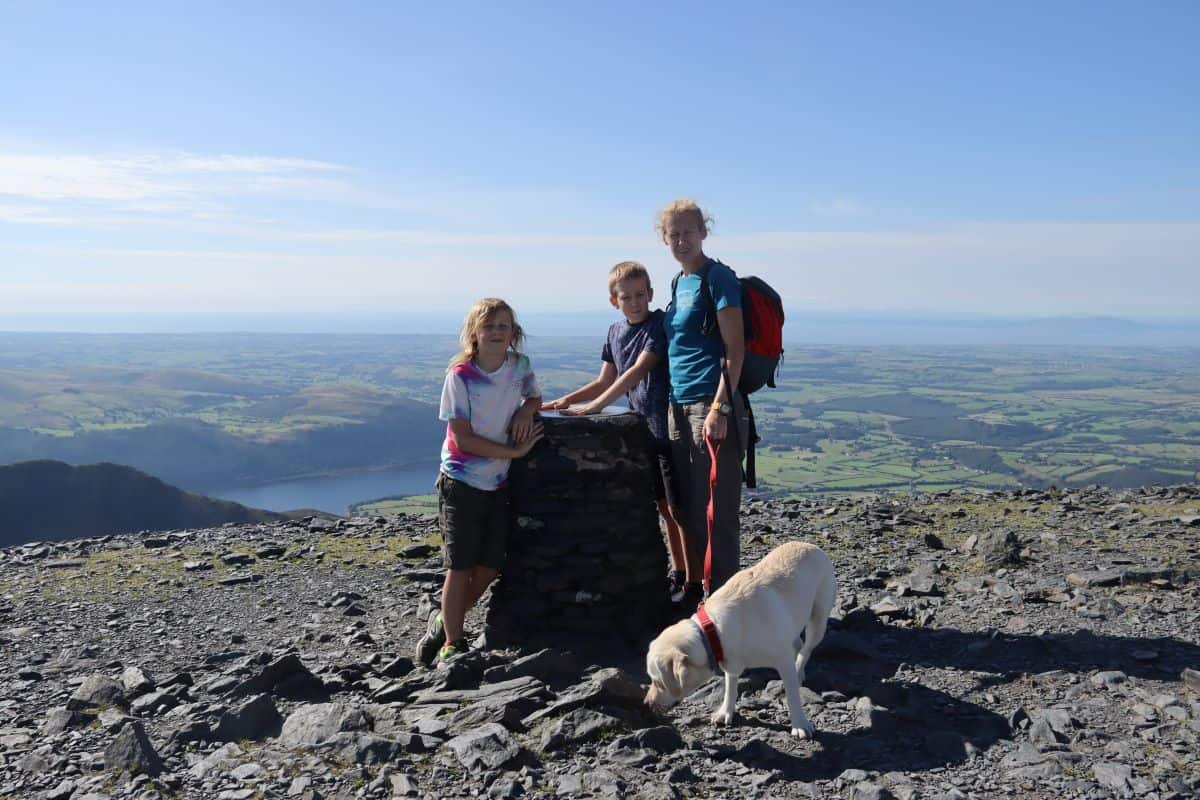
Stefan’s sensory profile
When Stefan was around three years old, we noticed that he started touching people whenever he was near them. He also ran his hand alongside fences and walls when we walked. He engaged in running and falling on his knees, on purpose. He also liked running into walls and trees, at high speed, and bouncing off them, often falling. I was concerned that he would injure himself and didn’t understand the purpose of it. Then, I went to a talk that introduced me to proprioception and the vestibular system.
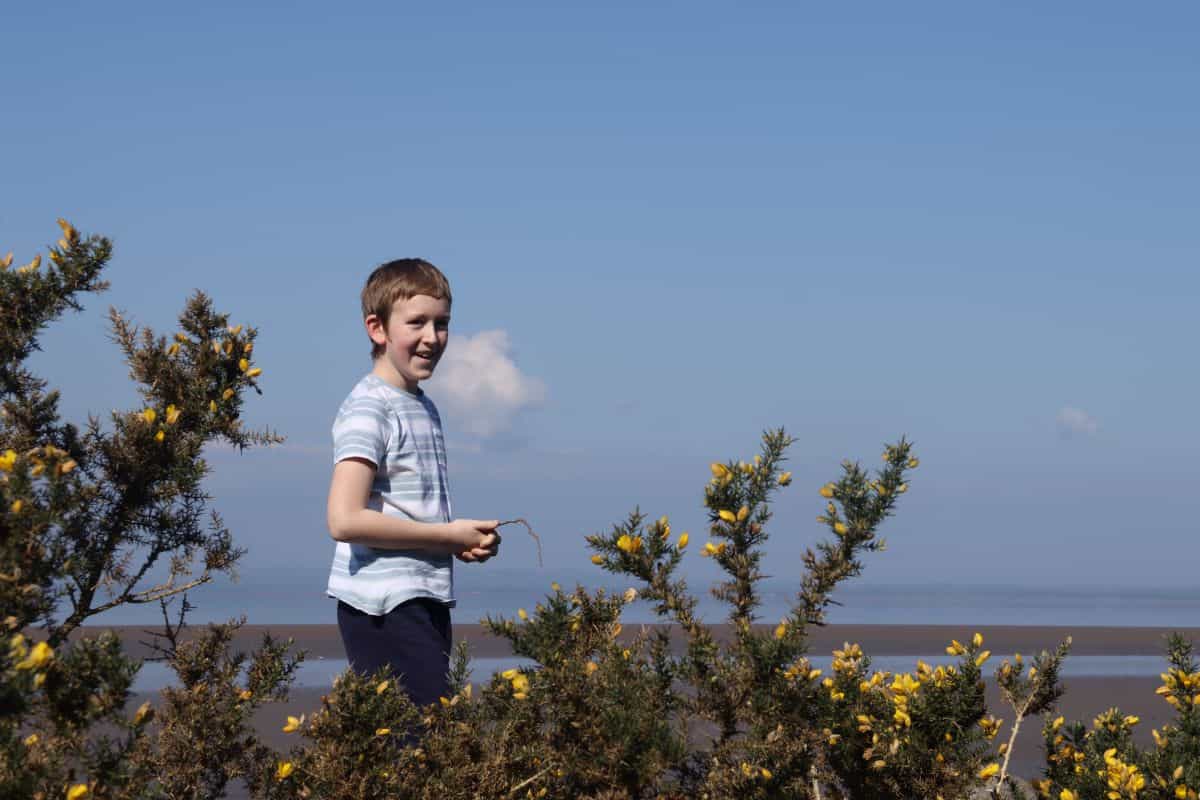
Sensory processing differences
Learning that we have more than five senses was a revelation to me. I also learned that the senses can be over-sensitive (too much input causes discomfort or pain) or under-responsive (a child is craving for more input). This can be compared to eating soup: too salty isn’t tasty, so we don’t want it, and not enough salt makes us want to add more salt. This was really eye-opening and made a lot of sense. However, I then learned that my child’s senses can be simultaneously under and over-sensitive. This was just too much. I didn’t understand how the same soup can be too salty one day and not salty enough another.
Physiotherapy at playgrounds
In the UK, autistic families do not have the support of physiotherapists, unless their child’s mobility is seriously affected. In our case, another university lecture I attended brought us some answers we needed. The lecturer encouraged me to use children’s playgrounds as a form of physiotherapy, as playground equipment is designed to support children’s physical development.
Playgrounds were not our favourite places. Stefan had a hard time with them because of the noise and all the other children. However, with therapy in mind, we looked for a playground that was quiet and often unoccupied and found one in a tiny village nearby. Always empty, it became a regular place to go after school and started using it as a form of physiotherapy.
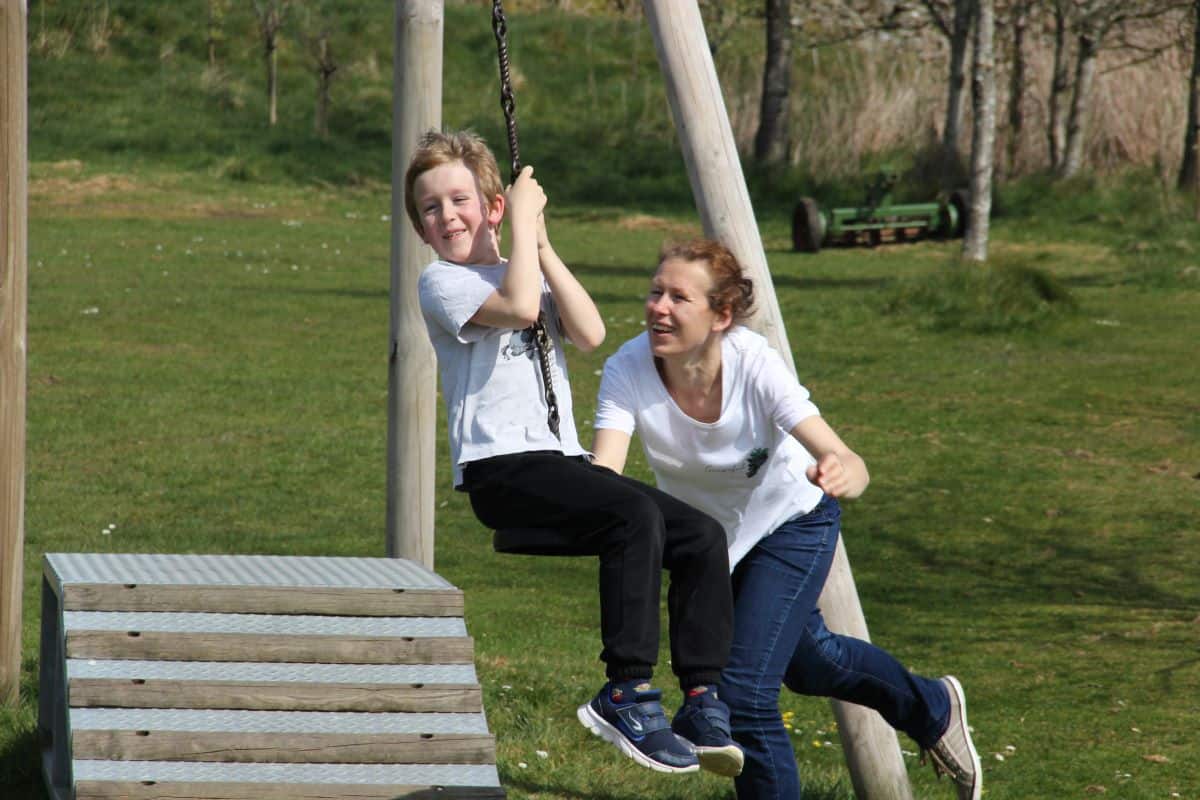
Proprioception (body awareness) and autism
Stefan’s intentional crashing and banging into things and his habit of touching people and walls, finally, had a word attached to them: proprioception. His proprioception was dysregulated. With this definition came an answer. We were told to push him hard on a swing, undertake rough play, play animal movements, wheelbarrow, jump on a trampoline, run, climb, and engage him in all activities referred to as “heavy work.”
We loved this task, and it made such a big difference for him. We continued making trips to our playground and started using nature with body awareness activities in mind. We would climb boulders at the seaside, climb trees, jump off small ledges, do a lot of silly running, rolling down hills, pushing, pulling, and exploring all animal walks. With time, it all paid off.
Did you guess we had a lot of fun too? Yes, we did!
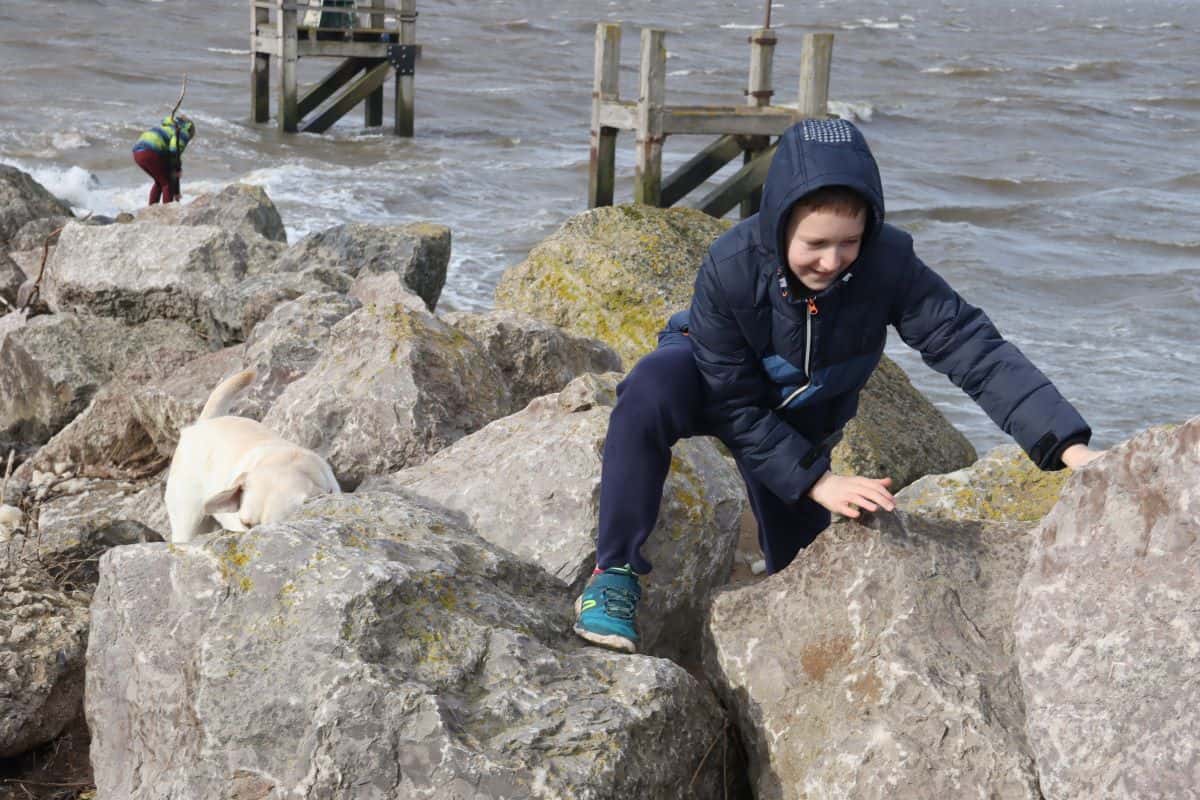
Vestibular system (balance) and the outdoors
From an early age, Stefan could spin around (for longer than I could watch) without ever feeling dizzy. He was never sick in a car. I’m the opposite; as an adult, I still experience travel sickness, and watching him spin caused me to get nauseous.
I was told that spinning was a possible sign of autism and I just accepted it as such. Alongside improving Stefan’s body awareness, we worked on Stefan’s balance. As I mentioned before, physiotherapy wasn’t available to us, but I had guidance from one of my lecturers and took it upon myself to help him in this area.
The outdoors was the perfect place to work on balance. We walked on every fallen tree, every stone wall, and up and down every hill. We walked in fallen leaves, in the snow, and over muddy squishy ground.
And yes, it did pay off! And yes, it was fun! Today, when I went for a bike ride with Stefan, and he was riding uphill, out of the saddle, I remember how unachievable this felt a couple of years ago…
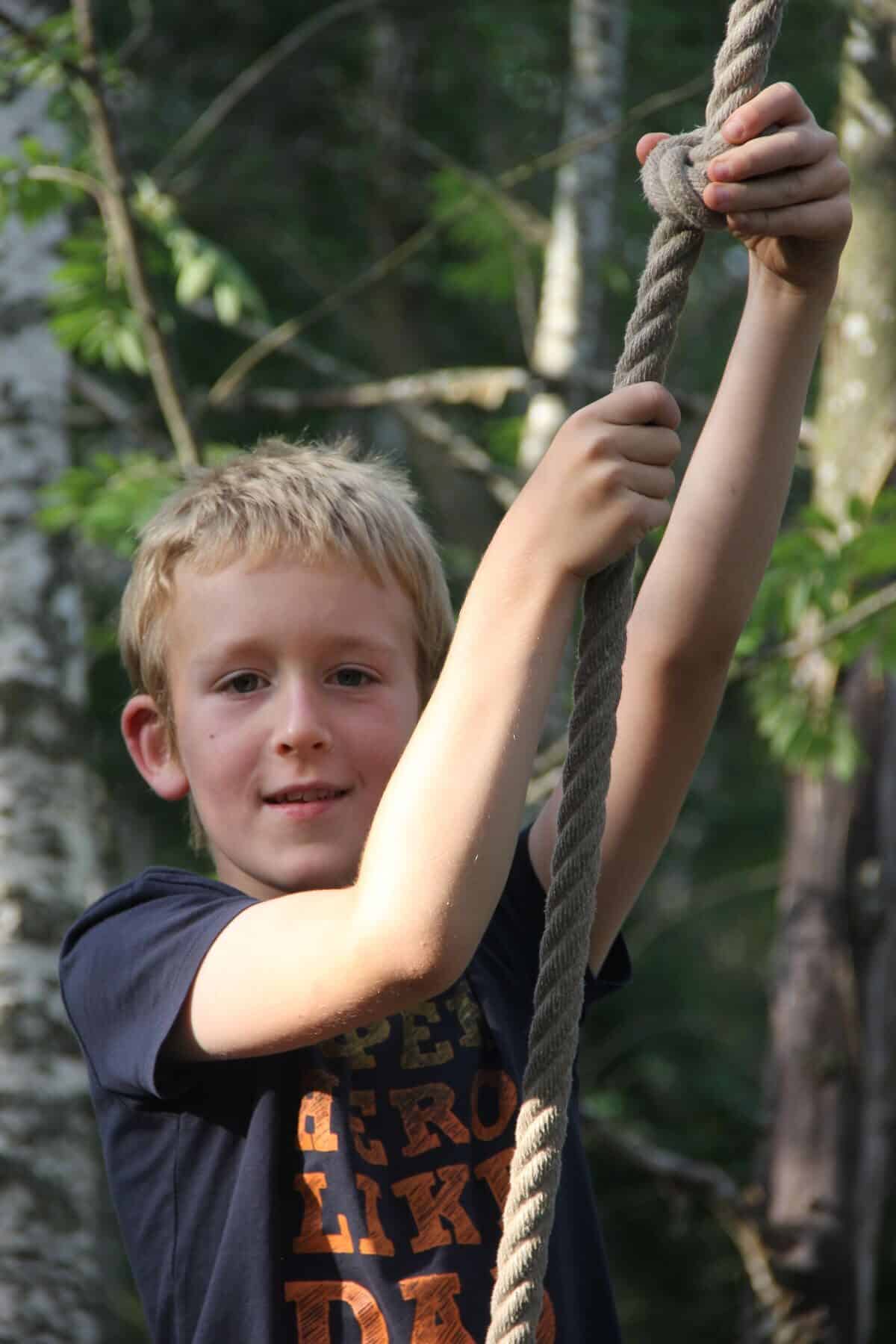
Speech and language therapy (SLT) and the outdoors
Stefan’s lack of communication was one of the red flags of autism when he was little. Not only did he not have speech (bilingualism was an excuse at the time), but he wasn’t interested in communicating with us or anybody else.
However, when he was outside, he was happy and more relaxed. Stefan was often more responsive and more communicative outside than when indoors. Playing in nature often required our help, which he needed to indicate, and we often didn’t offer until he made an effort to interact. Being outside also gave us an opportunity to teach Stefan many, many words and introduce him to the concept of natural variety.
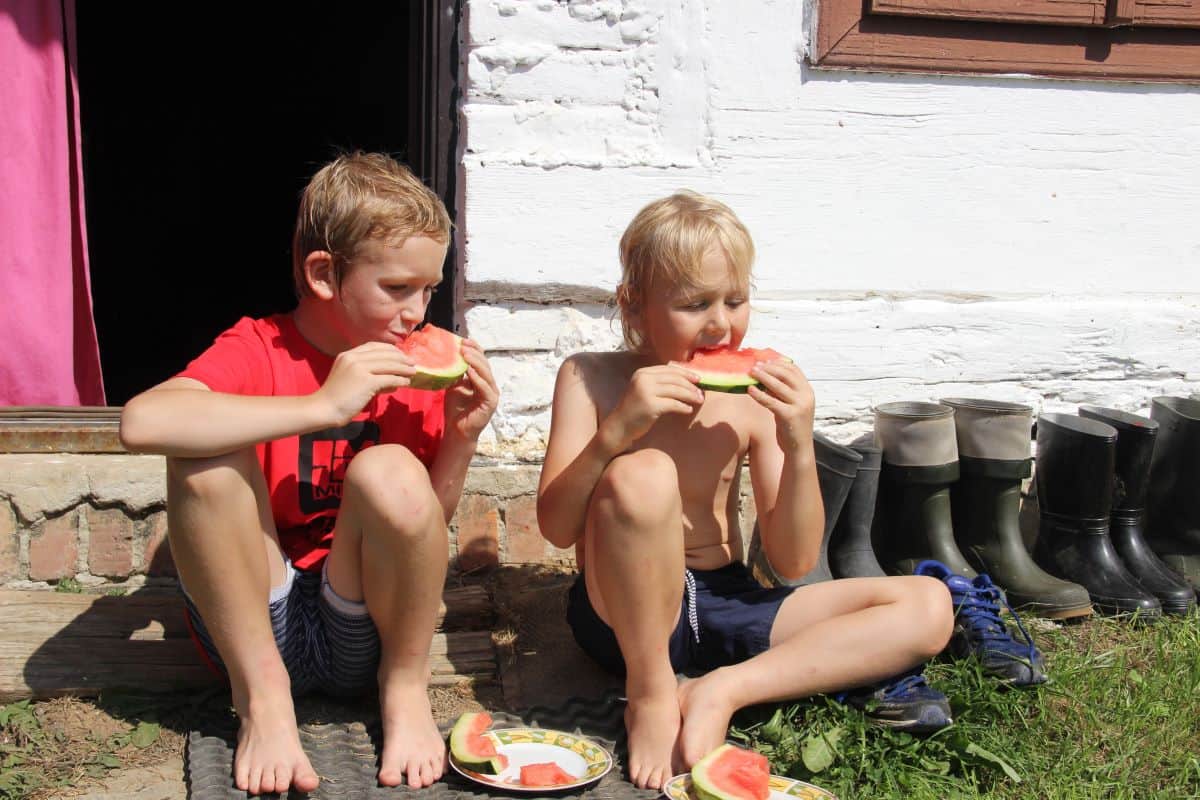
Learning through outdoor experiences
When Stefan was first diagnosed with autism, we often worked on putting together two-piece jigsaw puzzles of animals. One of them was a brown cow. After a few days, Stefan learned to point at a cow when I asked him to. But then, I found a picture of a black cow, and he couldn’t understand the connection.
Luckily, I had great support from his very enthusiastic SLT. Sarah encouraged me to incorporate as much as possible of Stefan’s language and communication learning in outdoor play rather than making it yet another living-room-arranged task. We moved our speech and language learning from our living room outside, and it was a great decision. That possibly made his learning more chaotic, but it was also more spontaneous and did bring the effect we wanted, eventually.
Since then, we’ve made an effort to intentionally connect his learning to the outdoors. For example, when he was learning about waterfalls in school, we would go to see a real-life waterfall. When they learned map reading, we would go exploring at a local park with a map over the weekend.
The school supported Stefan by keeping us up to date with their classroom topics, and we supported him by turning his classroom learning into an outdoor experience. Now Stefan is eleven years old, and while we don’t need to follow his school learning, we still believe that learning by doing and experiencing is the most meaningful to an autistic child. And we’ve personally seen it pay off.
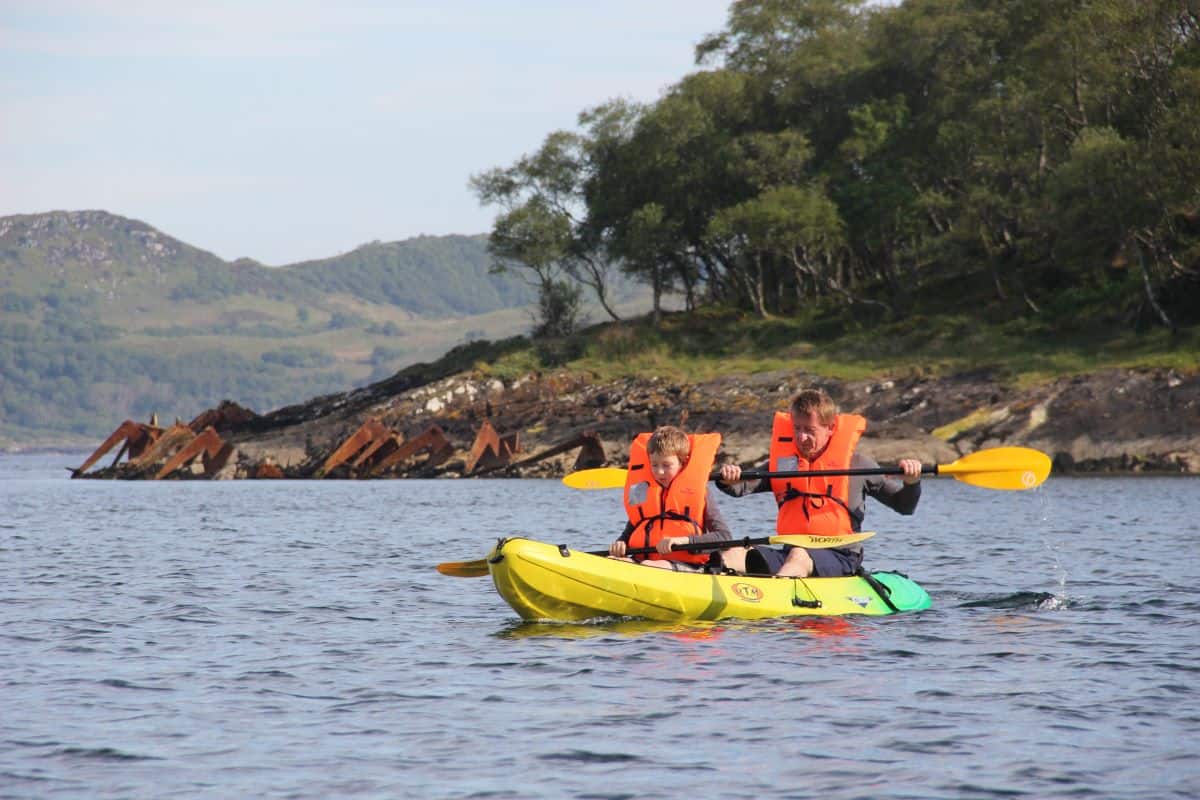
Expanding food choices outside
Like many autistic people, sensory processing differences narrow down Stefan’s food choices. However, we noticed that Stefan would be more likely to try new foods when we are out and about on trips or outdoor adventures. It’s an interesting concept we would never have realized unless we were outside and adventuring.
While this might not work for everyone, it works for him. He is more open to new options when he is tired and hungry after a hike. He accepts the fact that when we go camping, our food choices are limited, and we might not be able to cook his favourite food. And outdoors, he’s much more curious and willing to taste whatever we eat.
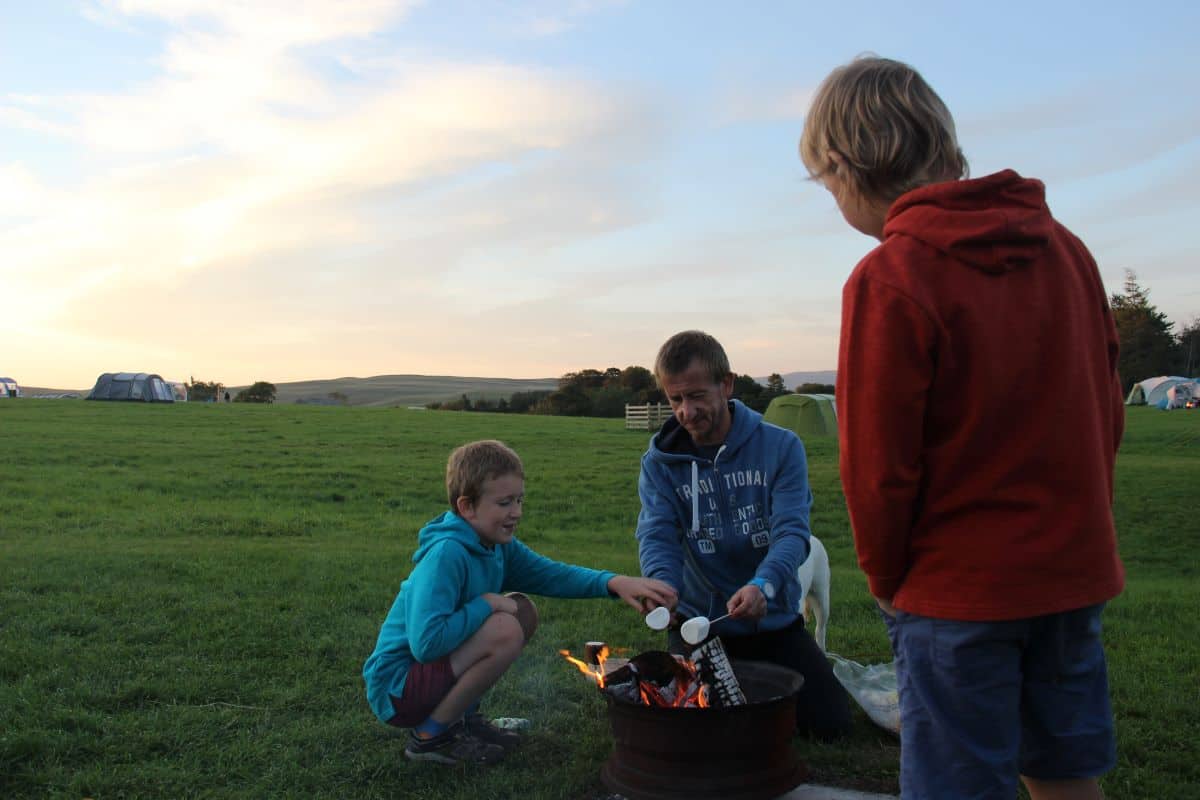
Fitness and health
Although Stefan might not be as physically fit as his neurotypical peers, we believe that he is in good shape and health. Our active routine of everyday walks and hikes and day trips on weekends have all made him a resilient walker. We are out in any season and any weather.
As a family, we also enjoy wild water swimming. I have to admit that Stefan only dips his feet in cold water in winter, but still does take part in our fun. And even in summer, lakes in northern England are far from being warm.
He also loves his weekly, train-spotting, out-of-town bike rides. He makes most of his trampoline and spends hours in our garden when the days are longer. His immune system is very healthy, and I think a lot of that is from all the time we spend outside.
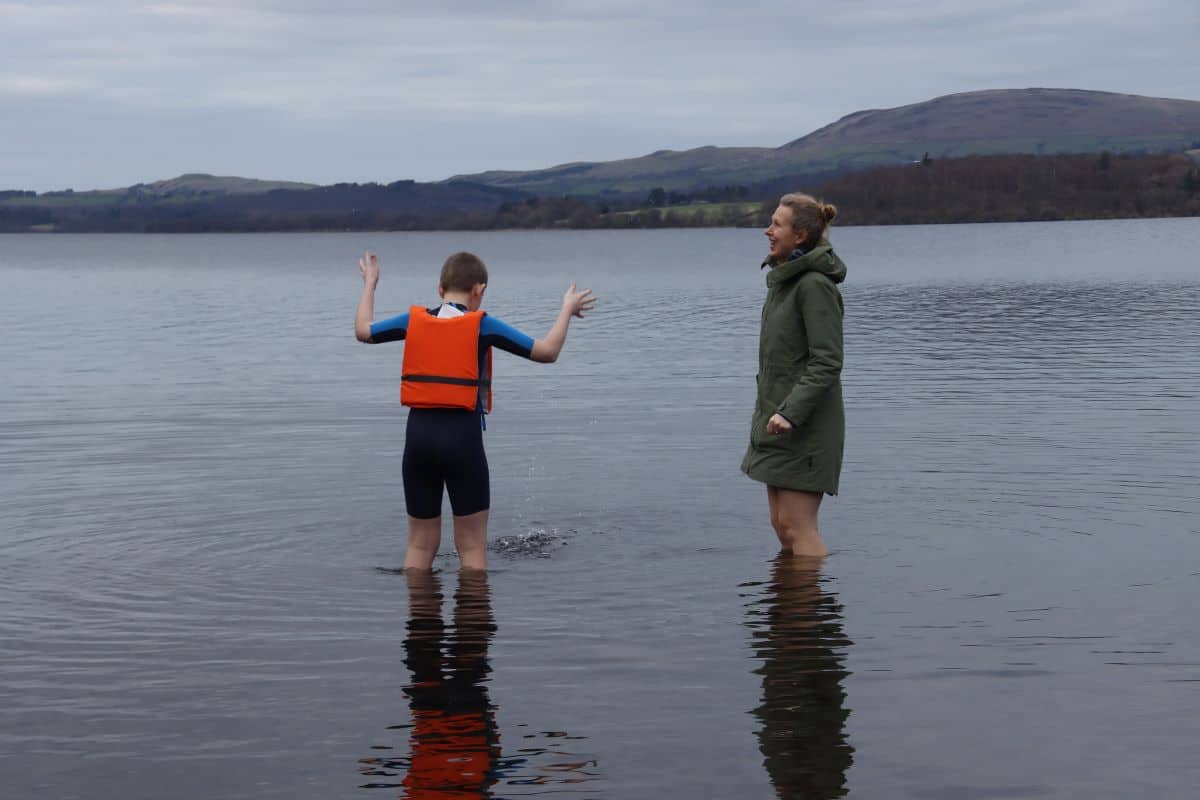
Building connection and trust outdoors
Although I said earlier that Stefan isn’t a boy locked in a glass dome, I haven’t always believed that. When he was little, we felt that he was so distant from us, emotionally. Being in nature made Stefan more relaxed and happy. It also allowed us more interaction, and we found him more open to our support and guidance.
Over the years, our outdoor adventures have shown us that Stefan wants to share his experience with us. Now, he often makes remarks about what he feels, sees, hears, or smells.
Another thing we let him do is help us choose our walks or trip destinations. Following and being responsive to Stefan’s choices makes him more open to new experiences. And, all these experiences in the natural world are shared moments of joy that allow so much more connection and closeness with him than I could ever have imagined. 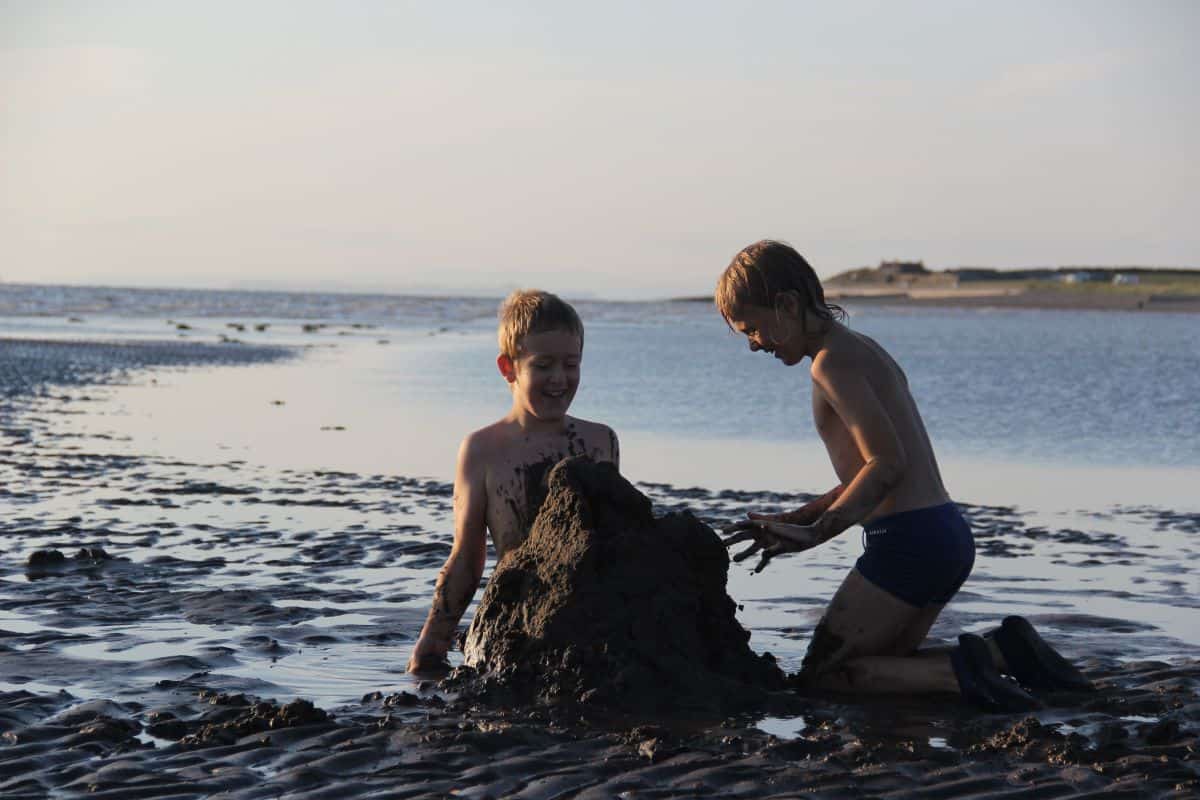
Lessons learned from lockdown
When schools shut down during the lockdowns, like many families, we switched to learning from home. Our homeschool experience was very successful. I had great guidance from Stefan’s school, and he had my (his private teacher at the time) full attention nearly all of the time (sharing only with his brother). His academic education went great. We also walked as much as was allowed and made the most of our garden. Stefan’s life was very structured and predictable.
However, when we were allowed to explore again, Stefan’s perfectly structured world was ruined. He refused to get into the car and refused to go anywhere. He wanted his 100% predictable routine, his safety net, back. We had to start from scratch. It was very hard on all of us.
Inspiration came from an unlike place. I will be forever grateful to the parent of little Isaac, whose YouTube videos Stefan loved watching. The videos were about lifts in supermarkets, and a promise to visit the lifts was our best bribe to get Stefan out of the house again. Somehow, it worked.
As the world was slowly opening up and expanding again, we cautiously went exploring. We quickly discovered that Stefan’s body forgot how to walk on unknown, uneven ground, how to run up and down hill,s and how to climb. It was a petrifying discovery. Luckily, with more outdoor adventures, he quickly adapted and soon was back on track. But, we’ve learned our lesson and now know that he needs to experience different terrains and environments frequently to keep his skills alive.
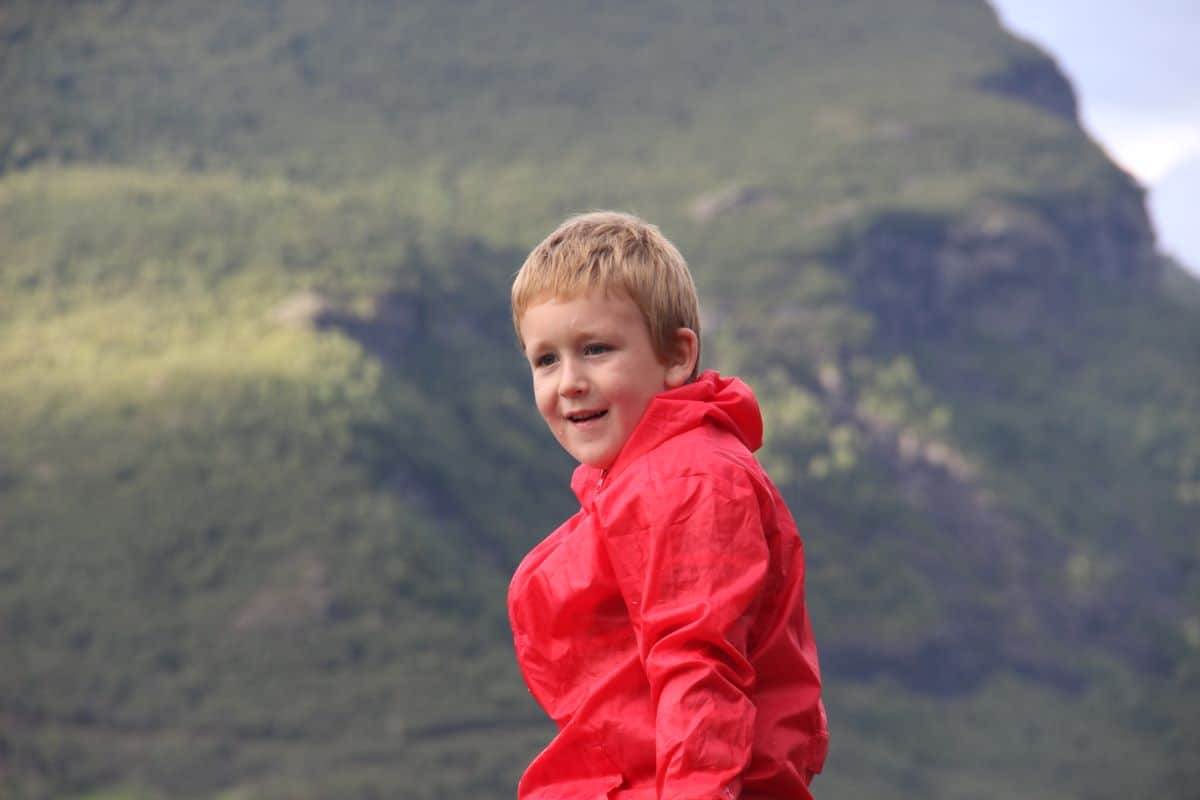
Outdoor recommendations for autistic families
Every autistic child is unique. Each of them has its own set of differences and strengths. I understand that not every family might be able to use the outdoors to the extent we do. However, if you would like to try, below are some activities you and your child might enjoy.
Garden/backyard activities
- Bubbles
- Sidewalk chalk drawing, chalk paint or a water painting
- Trampoline jumping
- Sandpit play
- Walking barefoot around the garden
- Playing hide and seek
- Messy play with mud (add grass or flowers for a wow effect)
- Kicking and throwing a ball
- Scavenger hunt (adapted to child’s levels of understanding)
- Jumping in puddles
- Gardening
- Pulling/climbing a rope
- Pushing a wheelbarrow
- Building a musical wall
- Mud kitchen
- Hammock
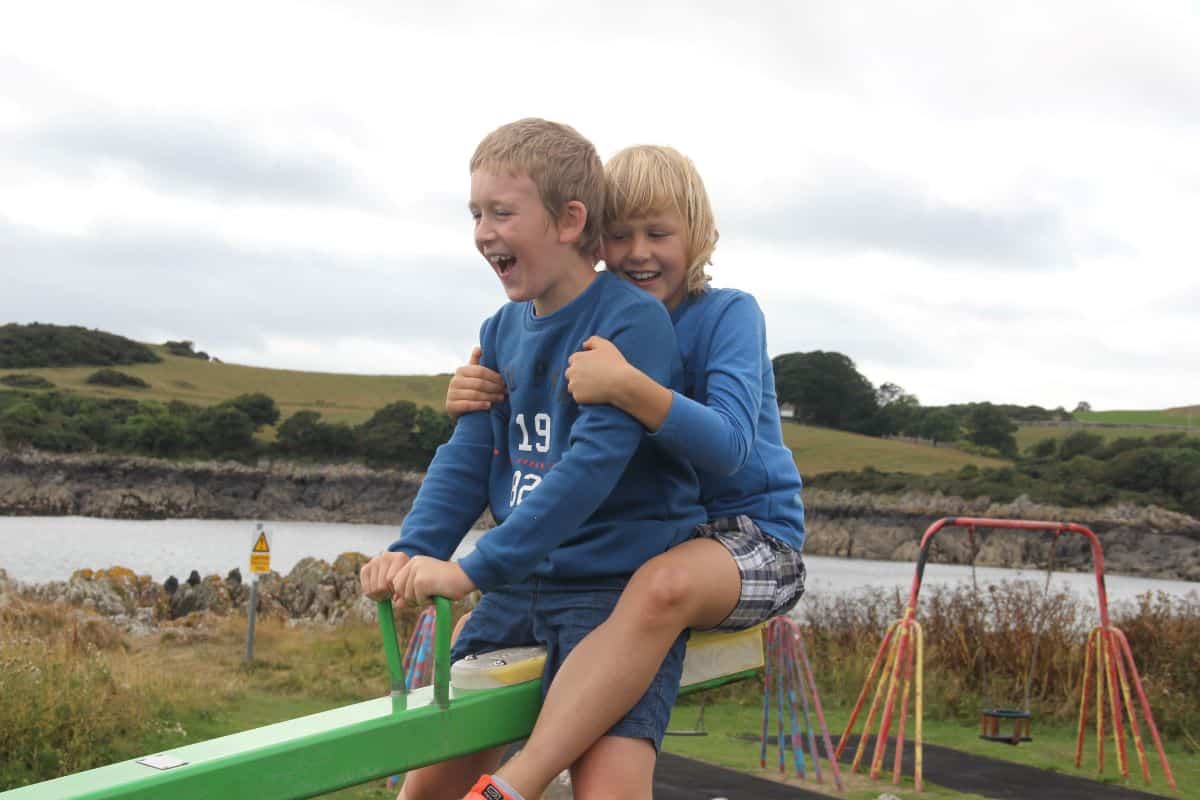
Exploring the wider world
- Neighborhood walks – Little walks around your area should provide the safety of a known place and a bit of exercise. It can be easily adapted, changed, and expanded.
- Woodland walks – Walks in the nearby woodland or forest are also great sensory experiences. A lot happens in the woods with changing seasons.
- Visiting playgrounds – If your child finds them too noisy, our hack is to visit them early morning or late afternoon.
- Stream paddling – Good fun in the water, great physical activity, and good for balancing.
- Beach – Spending time at the beach is an amazing sensory experience: sifting sand through their fingers, walking barefoot, paddling in a sea, and being allowed carefree play would make many children happy.
- Nighttime walk – We love little trips around the neighborhood or to our local woods at night. Torches off, senses on. It’s a really fun way to explore the same place in a new way.
- Rock climbing – We found a beach where nobody goes with lots of rocks to climb and play on. It’s fun, good for balance, and improves body movement and strength.
- Camping – Our best holidays are camping holidays! If you are unsure how it will go, try camping in your back garden first.
- Horse riding – This can be a bit pricey, but there is a long list of benefits.
- Canoeing/kayaking – A great water activity that’s very physical and involved all the senses.
- Raft building – We are currently collecting milk bottles to build our own raft this summer.
- Cycling – It took us a long time to convince Stefan to pedal. First, he had a tricycle. After a few years on trike, Stefan learned how to use a bicycle, and it brings him a lot of joy.
- Geocaching – Real-life treasure hunting with your phone! This is an absolute hit with our family.
- Rolling down dunes/hills – Great physiotherapy and lots of fun!
- I-Spy books – These are themed and motivate kids to finding new things and pay more attention to their surroundings.
- Hiking – Great outdoor physical activity with tons of variety and options.
- Farm visits – Visiting a working farm is a great way to experience a new place. Our favourite is an ice cream farm.
- Forest bathing – A visit to a forest can do wonders. Some places have sculpture trails or children trails.
- Kite flying – Cheap and cheerful entertainment for hours.
- Bonfire – Gathering wood and having an open fire (if allowed in your area).
- Winter play – Sledding and having a snowball fight.
- Building a snowman – And, of course, drinking hot chocolate afterward.
- Crabbing – It’s amazing how much fun you can have with a piece of bacon and a crabbing net.
- Foraging – Finding berries is what my children love: blackberries, raspberries, and wild strawberries are easy to find and delicious.
- Orienteering – With a help of an adult, children can navigate a map and find checkpoints.
- Fishing – A great way to keep kids outside and entertained for hours.
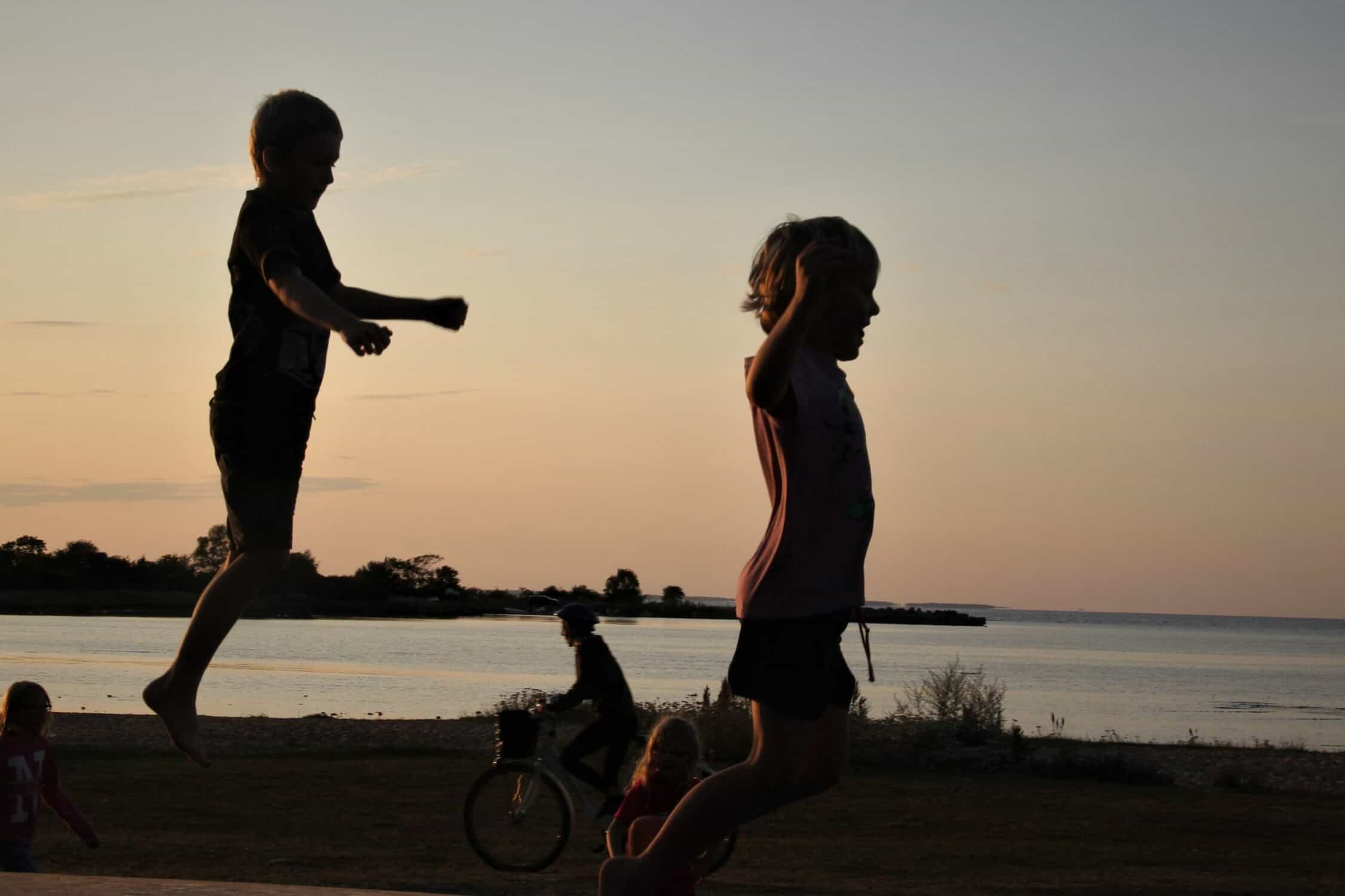
Useful literature and websites
- I-Spy books
- What a Child Should do Before They are 11 and ¾
- 101 Things for Kids to do Outside by Dawn Isaac
- The Big Book of 100 Outdoor Activities by Laura Minter & Tia Williams
- Playing, Laughing, and Learning on the Autism Spectrum: A Practical Resource of Play Ideas for Parents and Carers by Julia Moor
- Calvert Trust, just to give you an idea that there are outdoor centres created specifically for people with additional needs
- You Can Have an Outdoor Adventure by Alex Gregory
- British Orienteering
Your local public library will also have a shelf with factual books for children, including literature that encourages nature and outdoor play. A trip to a local library could be an adventure in itself.

Taking autistic children outdoors
The natural world has plenty to offer to our autistic children. We hope that this article would inspire you to spend more time outdoors and find what makes your child happiest.
Are you and your autistic child exploring and having fun in nature?
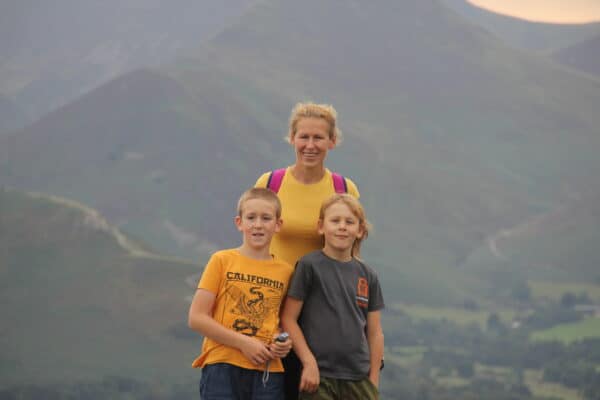
About the author
Anna is a mum of two energetic boys and the wife of Cezary. Before they started a family, they enjoyed backpacking and hitchhiking. Once the kids arrived, they adjusted their lifestyle and settled down in the beautiful Lake District, in the northwest of England. It’s often foggy and rainy where they live, but, they are outdoors in any weather. Anna is an ultramarathon runner, and Cezary loves triathlons, so, the children grow up being involved in hiking, trail running, cycling, all-year-round wild water swimming, and camping. Stefan is 11 years old and has been diagnosed with Autism Spectrum Disorder and ADHD. Antek is a neurotypical 9-year-old. Anna believes in positive psychology, in creating good moments and capturing memories. She believes that being outdoors brings them together as a family and advocates for children with additional needs to be encouraged to explore and play outside. She trusts nature is a natural playground, enriches and stimulates the senses, and this is where she sees her children happiest.
You can find more from Anna in the following online location:
Instagram: @celebrating_my_boys_journey
All RWMC posts: Anna Stopinska-Lewucha
Comments
One response to “Autism, Finding Happiness in Nature”
By exploring the positive impact of nature, sensory experiences, and physical activity, you underscore the potential for outdoor settings to promote well-being, social engagement, and sensory regulation. It’s wonderful to see how the outdoors can provide a welcoming and enriching environment for autistic individuals to thrive and experience the world in their unique way. Thank you for sharing this insightful perspective and promoting the connection between autism and the outdoors. Well done on emphasizing the importance of nature and outdoor experiences for individuals with autism!

Leave a Reply